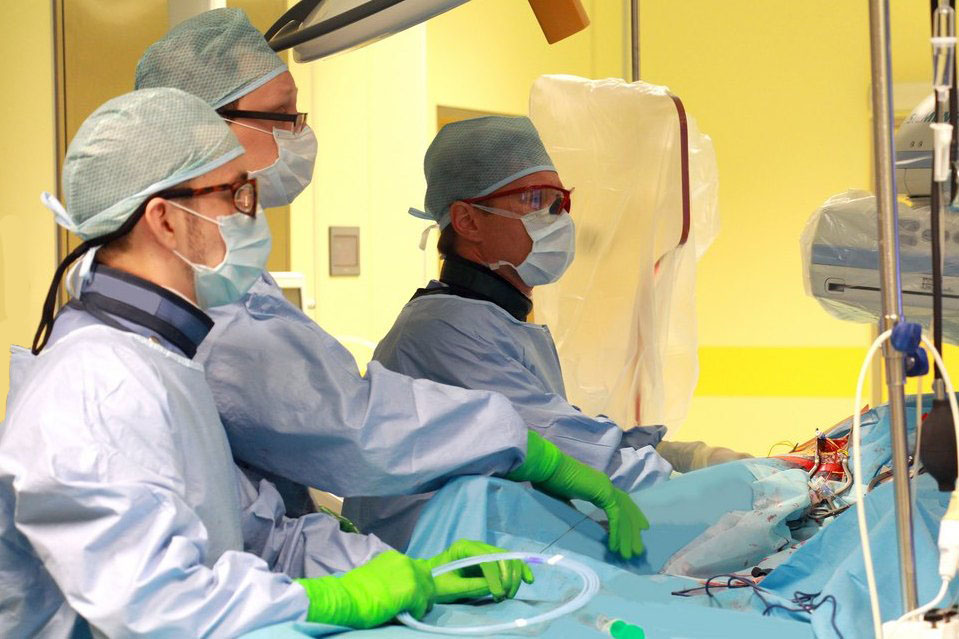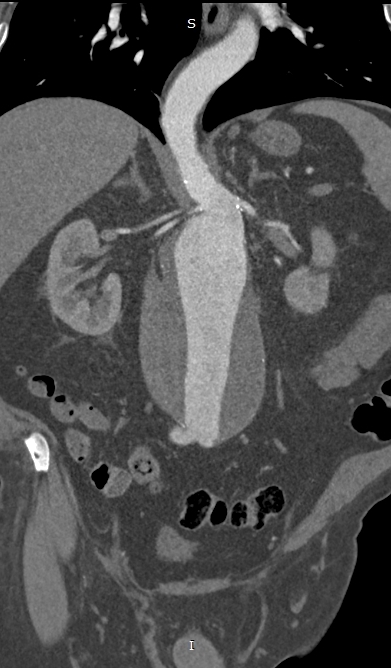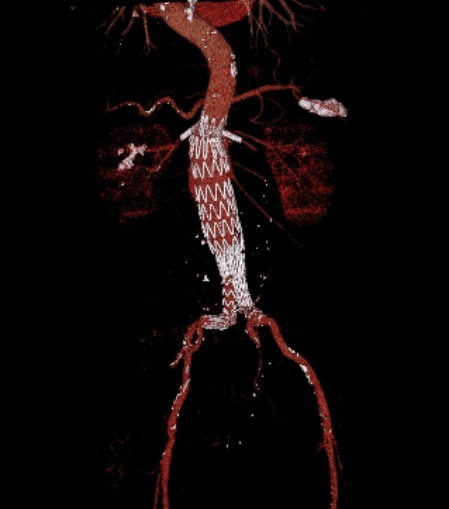
Over two years, the surgeons of the Almazov Centre have performed more than 100 endovascular repair procedures for aortic aneurysms. However, the unique case of October 2018 presented the surgical challenges due to the complex anatomy of aneurysm.
The patient was a 66-year-old male from Essentuki who presented to the Vascular Surgery Department of the Centre with a large abdominal aortic aneurysm measuring up to 83 mm in diameter and almost 18 cm in length. Renal arteries were also involved. The patient suffered from abdominal pain and had concomitant lung disease, CAD and obesity.
Patients with an aneurysm extending to the branches of abdominal aorta are often candidates for conventional open surgery. They are at high risk of complications and death.
However, minimally invasive methods developed for endovascular aortic repair with stenting of visceral arteries that supply thoracic organs changed the perspective towards the complex aneurysms and opened the door for new treatment approaches. In Europe there are a little more than 10 specialized centres performing this single-stage surgery on a regular basis. In Russia there are only a few specialists in this area with many years of experience both in endovascular and open surgery for aortic aneurysms.
The surgical team led by Mikhail Chernyavsky, MD, PhD, Head of the Vascular and Interventional Surgery Department, successfully performed endovascular repair of abdominal aorta and renal arteries with chimney technique, where the stent graft was placed to extend above renal arteries and additionally two parallel stent grafts were placed to preserve blood flow to the kidneys.
Total procedure time was 40 minutes, and most of the time was spent for access preparation, artery catheterization for renal stent grafts and other steps for successful surgery.
“The evolution of endovascular aortic aneurysm repair broadened the indications for endovascular procedure. The introduction of this new technique at the Almazov Centre would have not been possible if not for the support from the management. Clearly not every surgical team will be able to perform this advanced procedure due to its high complexity and not every chief will support this initiative. We were lucky to handle both challenges,” explained Dr. Chernyavsky.
The postoperative period is running smoothly and the patient will soon be ready for discharge with future follow-up at the Centre’s clinic.


